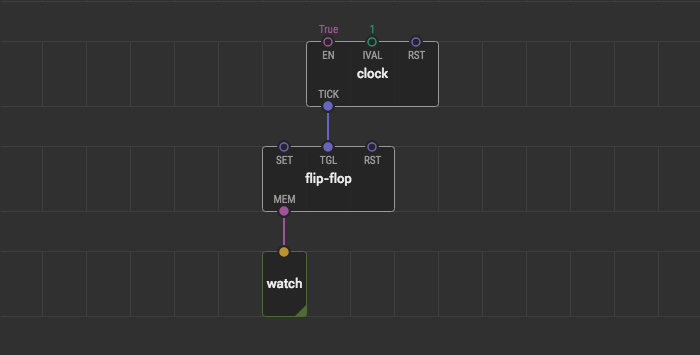This page has no translation to Русский yet. The original English version is below. If you’d like to help, great! See how to translate a documentation page in the contribution guide.
Note
This is a web-version of a tutorial chapter embedded right into the XOD IDE.
To get a better learning experience we recommend to install the
desktop IDE or start the
browser-based IDE, and you’ll see the same tutorial there.
Flip-flops

You can control the behavior of many nodes with pulses. A very useful node is flip-flop. It acts like a virtual switch, whose states can be controlled by pulses. A pulse on SET turns the stored MEM value to true. RST resets MEM to false. And a pulse on TGL inverses the MEM value.
The patch shown here toggles the output boolean value each second.
Exercise #
Let’s experiment with the flip-flop node.
- Replace
clocknode withtweak-pulsenode. - Add a couple more
tweak-pulses and connect them toflip-flop’sSETandRSTpins. - Run the simulation, and send pulses to each pin
Observe how the MEM value changes when sending several pulses to the same pin in a row.